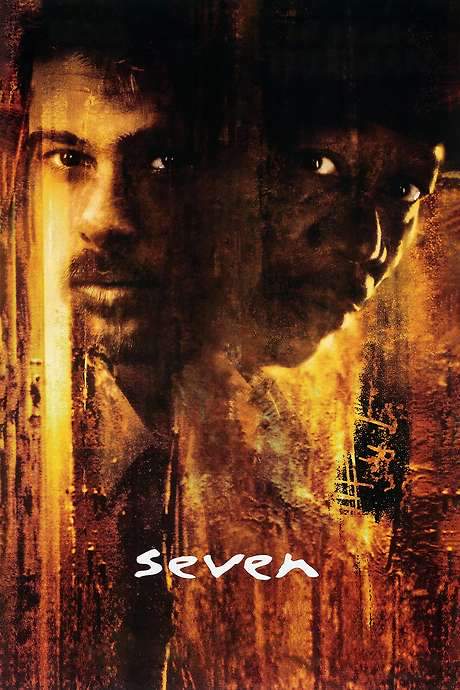Warning: spoilers below!
Haven’t seen Tomorrow at Seven yet? This summary contains major spoilers. Bookmark the page, watch the movie, and come back for the full breakdown. If you're ready, scroll on and relive the story!
Tomorrow at Seven (1933) – Full Plot Summary & Ending Explained
Read the complete plot breakdown of Tomorrow at Seven (1933), including all key story events, major twists, and the ending explained in detail. Discover what really happened—and what it all means.
A man unveils a valuable painting he picked up for $50,000 and is killed. A card with a large black ace (of spades) is placed on his chest, marking him as another victim of a mysterious killer who taunts the police by sending each victim a Black Ace card and signaling the time of their death. The pattern is chilling in its precision, a macabre game that seems to travel from crime scene to crime scene, each one colder and more calculated than the last.
Neil Broderick, an author, intends writing a book about the elusive killer and is on his way to see Thornton Drake to get more information about him. On the train, he crosses paths with Austin Winters, who serves as Drake’s secretary, and he also meets Martha Winters, who is Austin’s daughter. Together with them, Neil moves toward a plan to understand the threat while the clock ticks toward seven o’clock the following night. On the platform, the air is thick with suspicion, as if everyone carries a hidden motive or a concealed hand in the deadly game.
Drake has just received a Black Ace, the card bearing the ominous message: “At seven tomorrow night,” announcing the time of his scheduled death. Two plainclothes cops arrive from police headquarters, Clancy and Dugan, both unable to grasp the full danger of the situation or effectively handle the unfolding puzzle. Martha, determined to keep her group safe, suggests they retreat to Drake’s Louisiana plantation the next morning and do everything possible to be out of danger by seven tomorrow night. Drake, weighing the odds, agrees and unites the plan: they will all travel together and seek safety away from the escalating menace.
During the flight toward safety, the airplane’s lights flicker off for a few seconds and when they come back on, Winters has met his end—killed in a way that leaves no visible mark on the body. Back on the ground, the nervous tension shifts to the plantation, where Clancy begins a strained interrogation of suspects, while Neil uses a more strategic approach, pointing out that their location places them in a different state with its own jurisdiction to consider. Neil slips away to make a discreet phone call, then signals to an ally outside, stepping back into the room with a renewed sense of purpose. Meanwhile, one of the pilots has taken off in the plane, leaving Henderson behind, who claims ignorance about what happened, even though he was out of the cockpit when Winters died.
The coroner finds a letter on the dead man, a document that is supposed to reveal the Black Ace’s identity if Winters dies. Clancy begins reading it aloud, and just as the words are spoken, the lights go out again and, when they return, the letter has vanished from its place. The group is confined to their rooms for the night, and Neil has a hidden car outside that signals him when needed, adding another layer to the growing tension. The mystery deepens when the coroner arrives, revealing the real investigation is underway, and Neil heads toward Martha’s room to ask what she did with the letter, suspecting she might have hidden it out of fear of implicating her father, though she denies any involvement. In her room, the letter is gone; instead, two sheets of plain paper and a Black Ace card lie in its place, and the atmosphere thickens with accusation as Clancy and Dugan confront Neil about the missing evidence.
The next morning brings more shocks. Downstairs, the housekeeper, Mrs. Quincy, guides the fake coroner, Jerry Simons, who is secretly infiltrating the scene, as he carries Martha away in a tense, shadowy moment. Drake, now aware of the mounting peril, leaves the room with Neil and confronts Winters’ confession, but Neil has already signaled Simons to intervene and disarm Drake, exposing the truth that implicates Winters’ confession as a trap designed to ensnare Drake. Yet the confrontation is far from over. The gardener, Pompey, enters the room with a gun, turning the odds in the villains’ favor and pushing the tension to a palpable breaking point.
Two fights break out as the scene spirals toward its climax. In a bid to eliminate Simons, Pompey inadvertently strikes Drake, fatally wounding him with a hidden spike concealed in a walking stick. The apparent end of Drake seems to vindicate the enemies, and Pompey is quickly subdued by the authorities who rush in as the two cops, Clancy and Dugan, arrive to claim the victory and the credit for solving the deadly puzzle.
- Neal Broderick’s quest for truth intertwines with the fear that grips every character as the Black Ace killer continues to threaten, taunting the police with each new card and each cryptic message. The plot moves through a tangled web of deception, misdirection, and carefully orchestrated danger, where every room and corridor of the plantation holds a new clue, a new risk, and a new opportunity for revelation. The tension remains high as the true mechanism of the Black Ace murders is revealed in a dramatic finale, with loyalty, cunning, and timing all playing pivotal roles in determining who lives, who dies, and who finally takes the credit for ending the spree.
Characters at the center of this fatal game include Thornton Drake, whose life is stalked by the clock; Neil Broderick, the determined writer seeking the pattern behind the killings; Austin Winters, whose role as secretary ties him to Drake; Martha Winters, who becomes entangled in the danger and the mystery; the inept Clancy and Dugan, whose bungling threatens the group; the various suspects and workers of the plantation, including Jerry Simons, the fake coroner; Pompey, the loyal gardener with a dangerous weapon; the real coroner, who steps into the fray; and the others who populate this suspenseful tale, all wrapped in a chilling atmosphere of deception and peril.
As the final confrontation unfolds, the layers of illusion peel away, exposing the cunning of the mastermind behind the Black Ace murders. The climactic sequence blends quick setbacks with bursts of action, and the ending arrives with a mix of relief and regret, as the law closes in and the true identity of the killer is laid bare, leaving the surviving characters to pick up the pieces after a night of fear, intrigue, and deadly games.
Last Updated: October 09, 2025 at 09:34
Unlock the Full Story of Tomorrow at Seven
Don't stop at just watching — explore Tomorrow at Seven in full detail. From the complete plot summary and scene-by-scene timeline to character breakdowns, thematic analysis, and a deep dive into the ending — every page helps you truly understand what Tomorrow at Seven is all about. Plus, discover what's next after the movie.
Tomorrow at Seven Timeline
Track the full timeline of Tomorrow at Seven with every major event arranged chronologically. Perfect for decoding non-linear storytelling, flashbacks, or parallel narratives with a clear scene-by-scene breakdown.

Similar Movies to Tomorrow at Seven
Discover movies like Tomorrow at Seven that share similar genres, themes, and storytelling elements. Whether you’re drawn to the atmosphere, character arcs, or plot structure, these curated recommendations will help you explore more films you’ll love.
Explore More About Movie Tomorrow at Seven
Tomorrow at Seven (1933) Scene-by-Scene Movie Timeline
Tomorrow at Seven (1933) Movie Characters, Themes & Settings
Tomorrow at Seven (1933) Spoiler-Free Summary & Key Flow
Movies Like Tomorrow at Seven – Similar Titles You’ll Enjoy
Seven (1995) Spoiler-Packed Plot Recap
Seven Days to Live (2000) Ending Explained & Film Insights
Seven Days (2007) Ending Explained & Film Insights
Agatha Christie’s Seven Dials Mystery (1981) Plot Summary & Ending Explained
Seven Hours to Judgment (1988) Full Summary & Key Details
Scene of the Crime (1949) Movie Recap & Themes
Seven Doors to Death (1944) Film Overview & Timeline
Se7en (1995) Detailed Story Recap
Tomorrow Never Comes (1978) Story Summary & Characters
Seven Murders for Scotland Yard (1972) Detailed Story Recap
The Door with Seven Locks (1962) Story Summary & Characters
Before Midnight (1933) Spoiler-Packed Plot Recap
Seven Sinners (1936) Detailed Story Recap
Seven Blood-Stained Orchids (1972) Full Summary & Key Details
The Door with Seven Locks (1940) Full Movie Breakdown


















